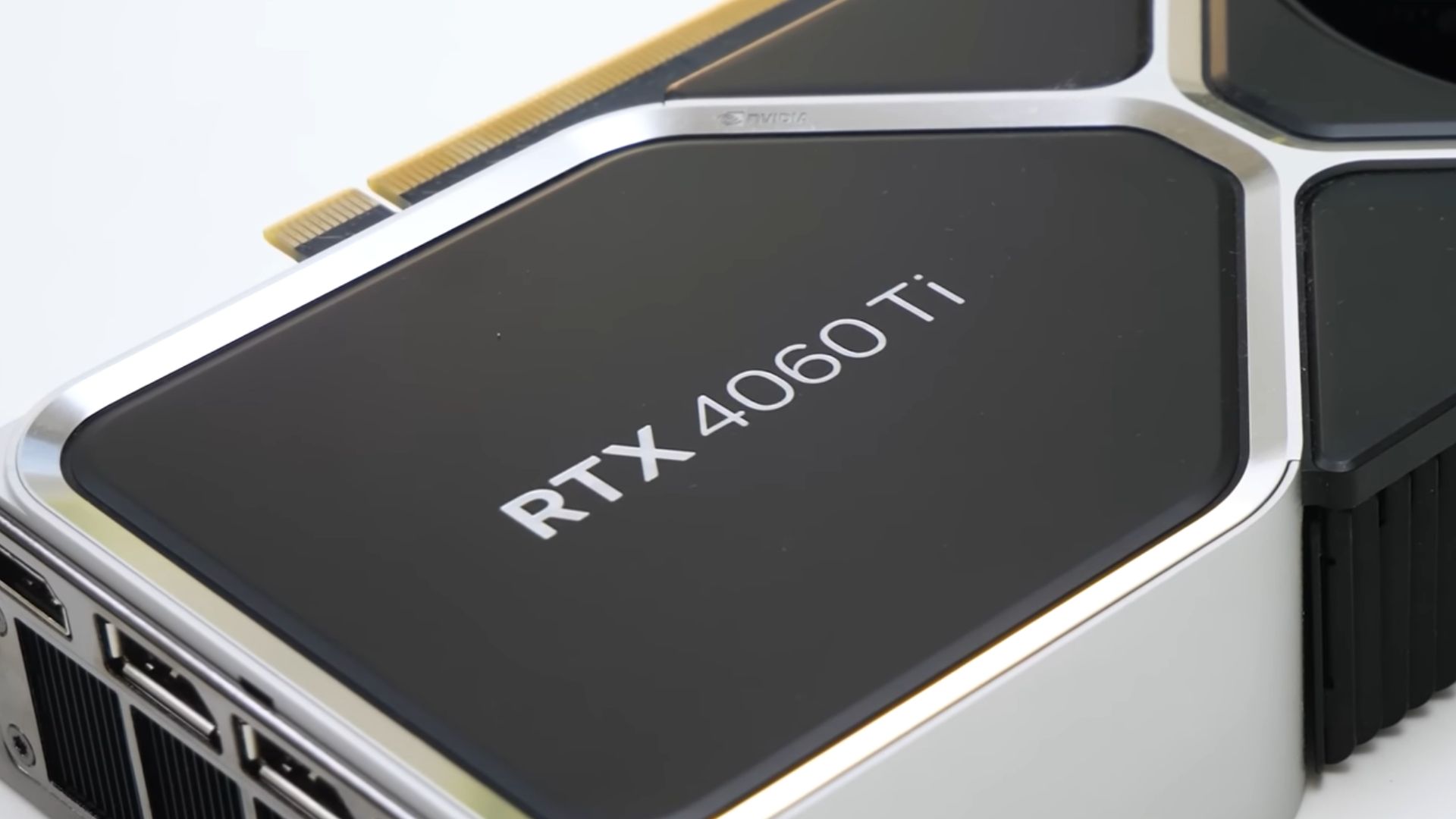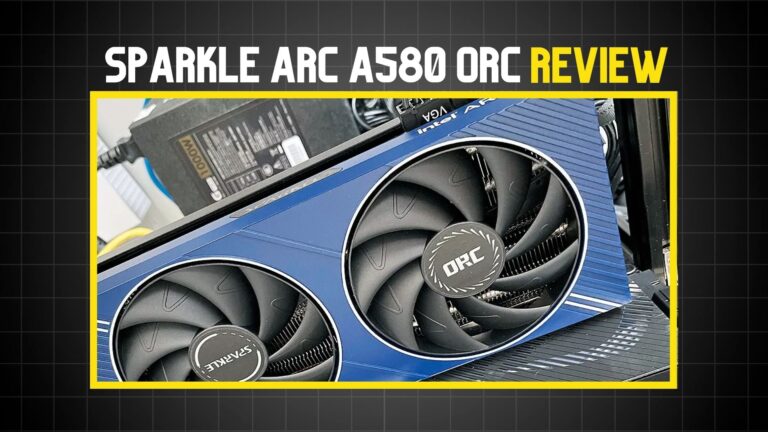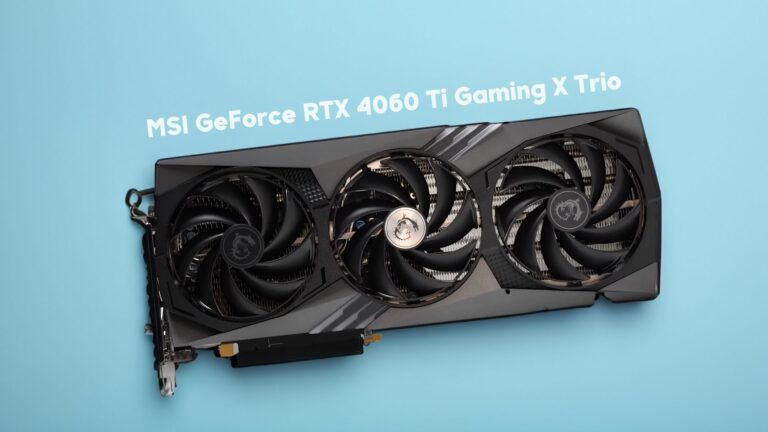Nvidia is launching its next graphics card in the 4000 series lineup. Today, I will be discussing the RTX 4060 Ti graphics card. This card is positioned below the RTX 4070 and above the RTX 4060 Non-Ti.
Speaking of its price, it is set at $400, which is $200 cheaper than the RTX 4070. Interestingly, it is priced the same as the previous generation RTX 3060 Ti.
Nvidia claims that this graphics card is designed for 1080p gaming. However, I personally believe that if you are spending $400 on a graphics card, it should be capable of delivering at least 1440p gaming performance.
Today, I will be testing this graphics card at both 1080p and 1440p resolutions to give you an idea of its capabilities.
Nvidia RTX 4060 Ti Founders Edition Overview

The Nvidia Founders Edition is a visually appealing graphics card, in my opinion. It is a 2-slot card with a length of 24cm and bears a resemblance to the design of the RTX 4070, although with a lighter shade. Unlike the larger RTX 4080 and RTX 4090, the RTX 4060 Ti has a more reasonable size, making it compatible with most cases available on the market.
The card utilizes a 16-pin high-power connector, similar to other cards in the 4000 series, and comes with an adapter to a single 8-pin connector, allowing compatibility with older power supplies.
In terms of features, the Founders Edition keeps things simple. It does not include a BIOS switch, RGB lighting, or any additional extras. Nonetheless, it offers a well-built card that surprisingly carries some weight despite its compact size.
Nvidia RTX 4060 Ti Specifications
| RTX 4060 Ti | RTX 3060 Ti | RTX 4070 | RTX 3070 | |
| Generation | (N)ada Lovelace | Ampere | (N)ada Lovelace | Ampere |
| CUDA Cores | 4352 | 4864 | 5888 | 5888 |
| Tensor Cores | 128 | 152 | 184 | 184 |
| Ray Tracing Cores | 34 | 38 | 46 | 46 |
| Boost Clock | 2535 MHz | 1665 MHz | 2475 MHz | 1725 Mhz |
| VRAM | 8GB / 16GB GDDR6 | 8GB GDDR6 | 12GB GDDR6X | 8 GB GDRR6 |
| Memory Bus | 128-Bit | 256-bit | 192-bit | 256-bit |
| L2 Cache | 32 MB | 4 MB | 36 MB | 4 MB |
| Fab. Process | TSMC 4nm | Samsung 8nm | TSMC 4nm | Samsung 8nm |
| TDP | 160 W | 200 W | 200 W | 220 W |
| Launch Price | 8GB – $399 16GB – $499 | $399 | $599 | $499 |
The Nvidia GeForce RTX 4060 Ti is based on Nvidia’s AD106 chip, which provides 3rd-gen ray tracing cores, 4th-gen tensor cores, optical flow accelerators, and new streaming multiprocessors. These new streaming multiprocessors offer up to two times the performance and power efficiency compared to the previous generation.
Onboard, you’re getting around 4352 CUDA cores, and it comes in two variants this time: an 8GB model and a 16GB model. The base clock frequency is approximately 2.31GHz, the boost clock frequency is around 2.54GHz, and the rated TGP is approximately 160 Watts. This card draws much less power than the previous-generation 3060 Ti, so a 550-watt power supply would be more than enough.
Another good thing is that it does support 8th gen AV1 encoding. Since it’s based on the new Ada Lovelace architecture, you get an increased L2 cache of up to 32 MB compared to the limited 4 MB cache on the previous-gen 3060 Ti. This improvement greatly enhances overall gaming performance, reduces latency, and also improves power efficiency.
Test Bench
| CPU | Intel Core i9-13900K | Check Price |
| Motherboard | ASUS ROG Maximus Z790 HERO | Check Price |
| RAM | 32 GB (16×2) DDR5 | Check Price |
| Cooling | Corsair H150i Elite LCD | Check Price |
| PSU | Deepcool PM650D | Check Price |
Before diving into the benchmarks, let me quickly tell you about the test bench PC setup we’ll be using. We’ve opted Intel Core i9-13900K. It offers excellent value for money. The motherboard we’ll be using is the ASUS ROG Maximus Z790 HERO. We’ve chosen XPG RAM, a 32GB kit (16×2) of DDR5 RAM clocked at 6000 MHz and 1TB PCIe Gen 4 NVMe SSD from the same brand. For cooling, we initially selected the Corsair H150i Elite LCD. It’s a high-performance 120mm air cooler available at an affordable price and significantly improves thermal performance. Lastly, powering all of this is a 650-watt 80 Plus Gold-rated SMPS from Deepcool.
Games Benchmark
I will be comparing the RTX 4060 Ti to its predecessor, the RTX 3060 TI, as well as the highly anticipated upgrade, the RTX 4070. Additionally, I’ll include the older RTX 3070, which is currently selling for about $500.

In Spider-Man Remastered, the RTX 4060 Ti performs quite well, surpassing the RTX 3060 TI by a little over 15.4% in 1080p and 25.9% in 1440p resolutions. Similarly, the RTX 4070 also maintains a slight lead over the RTX 3070, with a comparable margin.

In God of War, the RTX 4060 Ti doesn’t show any benefits over the 3060 TI, offering very similar performance at both 1080P and 1440p. Meanwhile, the RTX 4070 is considerably faster, especially at 1440p, where it goes from 104 FPS to a much better 151 FPS. The 3070 is also ahead in this regard.

In Assassin’s Creed Valhalla, the 4060 Ti performs approximately 22.6% better than the 3060 TI at 1080P and 15.7% better at 1440p. The 4070, on the other hand, provides a significant upgrade, particularly at 1440p. The 4060 Ti appears quite similar to the 3070, slightly behind at 1080P and narrowly trailing at 1440p.

In Dying Light 2, the RTX 4060 Ti is a bit faster than the 3060 TI and the 3070 at 1080p. However, there is a considerable gap with the RTX 4070, especially at 1440p, where the RTX 4070 is actually more than 36.6% faster.

In Cyberpunk 2077, the RTX 4060 Ti outperforms the 3060 TI by approximately 16%, which is decent. However, it falls behind the 3070 once again, and the 4070 exhibits even greater speed, surpassing the RTX 4060 Ti by around 30% at both resolutions.

Doom Eternal is a game that is very easy to run, with all cards achieving frame rates higher than most monitors can display. Therefore, playability is not an issue. However, it is still interesting to observe the raw performance differences. In this game, the RTX 4060 Ti surpasses the 3060 Ti by 40% at 1080p, but only at 1440p, 3060 Ti is 2 FPS ahead. It matches the 3070 at 1080p, but significantly falls behind at 1440p. On the other hand, the RTX 4070 is 32.3% faster than the 4060 Ti at 1080p, but exhibits an impressive 50.2% increase in performance at 1440p.

In Formula 1 2022, when playing on ultra high settings which include Ray tracing effects, it becomes challenging to run the game smoothly on most cards without some form of upscaling. However, one would expect the newer RT cores to provide some benefit in this scenario. At 1080p, the RTX 4060 Ti once again demonstrates a 10.5% improvement over the RTX 3060 Ti, while still maintaining a 18.5% advantage at 1440p. This places it roughly on par with the performance of the 3070. As expected, the RTX 4070 outperforms both cards, delivering a speed increase of 30% or more at both resolutions.

Microsoft Flight Simulator is known to be a CPU-intensive game, so significant differences in performance may not be expected at 1080p resolution. Nevertheless, the RTX 4060 Ti manages to maintain an 30.6% lead over its predecessor at 1080p and an 11.7% advantage at 1440p, coming close to the performance of the 3070. However, the RTX 4070 remains considerably faster, with a 22.2% lead at 1080p and a notable 31.5% lead at 1440p.

The results for the CS:GO performance on the 4000 series cards have been consistently unusual since their launch. Despite conducting multiple tests on each card in recent months, the outcomes have consistently remained the same, with the newer 4000 series cards generally falling behind their predecessors.
Nvidia RTX 4060 Ti vs RTX 3060 Ti

Let’s compare it to the 3060 TI. The benefits really vary per game, with the 3060 TI actually beating the 4060 Ti by a couple of percent in CS:GO. However, there are a few games where the 4060 Ti wins by 20% or more. On average, looking at these 9 games, it ended up being only 18% ahead.

On 1440p, the differences are generally small, with occasional exceptions. A 13% overall difference is far from exciting for a new generation, especially when compared to other 40 series cards that showed significant improvements over their predecessors. It feels like, even though the 4060 Ti is faster on average, it still falls short as a 1440p card compared to what the 3060 TI offered when it was released.
Nvidia RTX 4060 Ti vs RTX 3070

When comparing the performance of the RTX 3070 and the 4060 Ti at 1080p resolution, there are variations observed in different games. For instance, the 3070 may outperform the 4060 Ti in games like CS:GO, while the 4060 Ti may perform better in games like Dying Light 2. Nevertheless, when considering their overall performance, the two cards end up being quite close, with the RTX 3070 holding a slight advantage of 3.4%.

On 1440p, the previous generation RTX 3070 is generally the faster option, with an overall performance advantage of about 9.9%.
Nvidia RTX 4060 Ti vs RTX 4070

If you’re seeking even higher performance, the RTX 4070 is significantly faster, even at 1080p. There are many games where it outperforms by 30% or more, and on average, it maintains a lead of approximately 29.2%.

At 1440p, the average performance gap between the two cards actually increases to 32.6%. This is a significant difference considering that both cards are positioned as viable options for this resolution. If you’re planning to play at 1440p or are considering an upgrade, I would strongly recommend considering the RTX 4070 for its substantial performance boost.
DLSS3 Frame Generation Benchmarks
One of the new advantages offered by the Nvidia 4000 series cards is DLSS3, which includes AI frame generation. This feature allows the GPU to use AI to generate an additional frame between two existing frames. This can be particularly beneficial in situations where the frame rate is limited by your CPU. Additionally, DLSS3 can help increase the frame rate in demanding AAA titles that are challenging to run smoothly.

Microsoft Flight Simulator often experiences CPU bottlenecks, even with mid-tier graphics cards. Enabling basic upscaling alone doesn’t significantly improve the frame rate. However, with DLSS3 and its AI frame generation, the frame rate experiences a significant boost. Moreover, the image appears visibly smoother, especially when playing at 1440p.

Spider-Man remastered with ray tracing enabled, using DLSS upscaling instead of native resolution proves to be the best setting. DLSS provides a significantly higher frame rate, making it suitable for high refresh rate displays. Additionally, it offers the lowest possible latency, ensuring a smoother gaming experience.

In Dying Light 2, when playing at the highest Ray Tracing High preset, the performance depends on the resolution. At 1080p native resolution, the frame rate is too low for comfortable gameplay. However, using DLSS upscaling provides a significant improvement in frame rate and reduces latency. On the other hand, enabling frame generation barely improves the frame rate and introduces noticeable latency penalties. However, at 1440p resolution, turning on frame generation feels better as the 44 FPS 1% lows without it are quite noticeable. Even though personally, I would opt to lower the quality settings for an even higher frame rate and lower latency.

If you want to play The Witcher 3 on the highest settings with all ray tracing effects enabled, enabling frame generation is the recommended approach. Even at 1080p resolution, it may not be possible to achieve a native or upscaled 60 FPS frame rate. However, with frame generation, the gameplay experience becomes quite enjoyable. On 1440p, using DLSS3 can push the frame rate slightly above 60 FPS. However, similar to Dying Light, I personally suggest adjusting the settings slightly instead of trying to maximize all options for an optimal balance of performance and visual quality.

Lastly, in Cyberpunk 2077 with the fully path traced RT Overdrive mode, using DLSS upscaling and frame generation, we achieve an average frame rate of 71 FPS with 52 FPS for the one percent lows at 1080p resolution. While it is possible to play the game with these settings, it can be somewhat disappointing considering this is Nvidia’s latest $400 card. Despite the inclusion of frame generation, it struggles to keep up with the demanding requirements of the game.
Power Consumption

One area where the 4060 Ti excels is in power consumption. It averaged just under 150 watts in gaming, which means that the RTX 3070 consumes approximately 48% more power for a performance that is roughly similar.
Thermals & Noise

Most 4060 Ti models tend to run cool and quiet, so you generally don’t need an excessively large or expensive cooler. The Founders Edition, in particular, does a commendable job in maintaining very reasonable temperatures while remaining barely audible under heavy load, as you would expect.
Final Thoughts
Overall, I think the 4060 Ti does what I expected it to do. As I mentioned, with the 4070, Nvidia has the ability to position a product exactly where they want it to be. So, it makes just enough sense compared to everything else. Having 15% more performance than a 3060 Ti feels like the absolute bare minimum they can get away with. With the 4060 Ti being slightly better, costing the same, being technically faster, and offering features like DLSS3, AV1 encoding, and much lower power consumption.
It’s true that upgrading from a 3060 Ti to a 4060 Ti may not be worth it due to the relatively minor performance improvement. However, if you have an older GPU and are choosing between the two, the 4060 Ti does make more sense. It’s worth noting that the 4060 Ti might be disappointing for those expecting performance similar to a 3070 at 1080p, as the 3070 is actually faster at 1440p. However, considering that the 3070 is more expensive, lacks some features, and consumes more power, I wouldn’t recommend it unless its price significantly drops.
The only current generation alternative is the 4070, which has a name that sounds similar but offers significantly different performance. Although the 4070 may not be the most popular card at the moment, the 4060 Ti actually makes it appear attractive and better than ever. However, if you primarily game at 1080p, it may not be necessary to spend an extra $200 on a GPU. Paying $400 is already quite a substantial amount for 1080p gaming alone. It’s important to consider that Nvidia’s emphasis on 1080p gaming is a notable weakness when contemplating an upgrade to 1440p in the future. This card may struggle to handle that resolution comfortably.



![Nvidia GeForce RTX 4090 Review [22 Games Tested]](https://www.theworldsbestandworst.com/wp-content/uploads/2023/05/Nvidia-RTX-4090-Review-768x432.jpg)


